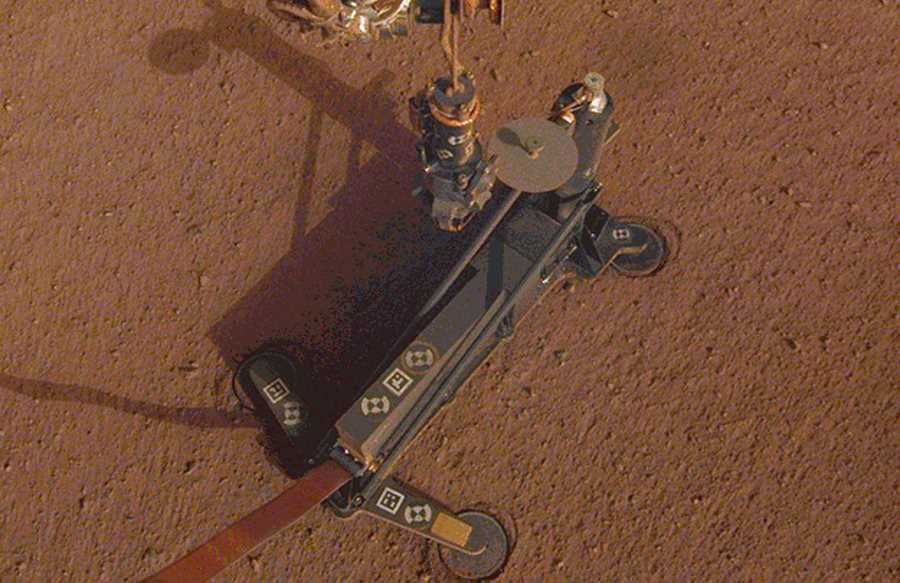The Polish Mole has encountered an obstacle while driving into Martian soil

The Polish Mole encountered an obstacle while driving into Martian soil
Made by Polish engineers, the mechanism for driving the heat flux probes (HP3) from the interior of Mars began work and almost immediately encountered an obstacle. So far, the device has penetrated to a depth of about 30 centimeters.
The Mole first plunged into Martian soil on February 28. The first 18 centimetersow overcame in 5 minutes, but then encountered an obstacle. As reported by Tilman Spohn, head of theowny scientist of the HP3 (Heat Flow and Physical Properties Package) experiment from the German Space Agency (DLR), Mole probably encountered a stone. Data also show that the device tilted by about 15 degrees.
Tests on Earth have shown that the device is capable of pushing smaller rocks aside, and this is likely what happened. Spohn admitted that the Mole pushed the stone aside, but probably encountered another one. Currently, scientists estimate that the driving mechanism is located at a depth of between 28 and 32 cm.
The first session of driving the mechanism into the ground caused the entire frame to shift by about 2 cm. The second session led to a further shift of the support structure. During these twooch sessions the device made about 10,000. impacts. But there is no reason to worry. The mole was designed to withstand four more times that amount.
The mole uses a fully automatic, electrically driven hammer mechanism. The worm gear extends the głowny spring, whichowhich then produces an impact. – One can imagine that the Mole acts as a large gwoźdź with a built-in hammer,” explained Torben Wippermann of DLR.
The entire insertion process was scheduled to take 40 days, but the opoźnienia already at the beginning of the work I can change plans. On the first day, the goal was to reach a depth of 70 centimetersow. But a rock stood in the way.
Why is it taking so long? After each session of driving into Martian soil, the mechanism „rests”, to digest the temperature, whichora was created during the penetration process. The thermal conductivity of the ground is then measured. For this purpose, the Mole heated for several hours, which gives some idea of the thermal conductivity of the soil in the immediate vicinity of the device.
Scientists aim to reach a target depth of three to five metersow. The Mole is expected to pull a five-meter-long cable equipped with 14 sensorsoin temperature to measure its distribution with depth and the change over time after reaching the target depth, and thus the heat flow from the interior of Mars.
The mole has arrived on Mars with the InSight mission, whichora landed on the Red Planet in late November last year. The hammering mechanism, made entirely in Poland, is expected to bring the heat probe to a depth of five metersow. The mole was designed by an engineerow from the Astronika company, whichora, as coordinator of the production process, engaged several Polish scientific centers for subcontractingoin science, m.In. Space Research Center of the Polish Academy of Sciences, the Institute of Aviation, the Institute of Welding, the Technical University of Łodzka and the Warsaw University of Technology.
The mission aims to study the seismic activity of Mars. Scientists will want to get an indication ofowks on the internal structure of the planet by detecting vibrations caused by surface quakes, meteorite impactsow and other such events. This research will be carried out using the ultra-precise SEIS seismometer.
The third mainoThe InSight mission’s primary scientific instrument, after the seismometer and probnik measuring the heat is RISE (Rotation and Interior Structure Experiment) – instrument used to measure the Doppler shift of the signalow between InSight and Earth. It will allow to detect small variations in Mars’ rotation axis, which should give additional information about the planet’s nucleus, including its size.




